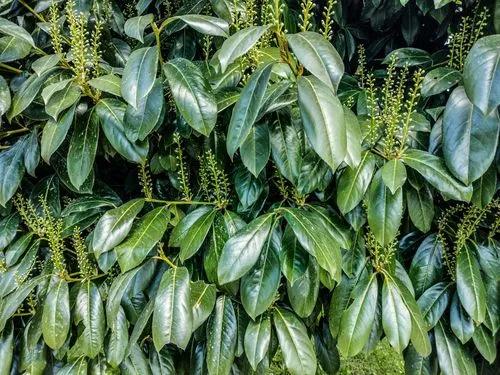Lonicera caerulea, also known by its common names blue honeysuckle, sweetberry honeysuckle, fly honeysuckle, blue-berried honeysuckle, or the honeyberry, is a non-climbing honeysuckle native throughout the cool temperate Northern Hemisphere.
Blue honeysuckle Care
Lonicera caerulea



Lonicera caerulea is a circumpolar, multi-branched, deciduous shrub that is native to moist boreal forest areas, mostly in peaty soils, in northern temperate climates in Asia, Europe and North America. This shrub, in general, is unlike many of its honeysuckle relatives in that it produces an edible, tasty, blueberry-like fruit. It typically grows to 4-6’ tall and as wide. Opposite, elliptic to ovate, glaucous green leaves (each to 2-3” long) have slightly wavy leaf margins. Pale yellowish-white flowers (to 5/8” long) bloom in late spring to early summer (April-June) in pairs along the shoots. Fruits ripen in early summer to deep blue with reddish-purple insides. Fruits are pruinose with an oval-teardrop to almost-globose shape. Variability in growing characteristics results in part from the large geographic distribution of this shrub. It's invasive in North America.
How to Care for the Plant

Water

Consistent moisture is important in the early years of development. Shrubs will show some drought tolerance only after root systems are well-established.

Fertilizer

A granular fertilizer formulated for woody plants applied at bud-break each spring helps to encourage the formation of strong, abundant growth which will bear heavily the following season.

Sunlight

Your shrub will grow the best if you can site it in full sun. It may be able to grow in partial sun, but do not expect as many flowers or fruit to form.

Soil

For optimal growth, you need soil that is neutral or acidic. If your soil is just a little alkaline, it is possible to grow this plant there or make the soil more acidic before planting. This species does not like to have wet feet so make sure that the soil drains well. Shredded bark mulch will help soils retain moisture.

Temperature

This plant is considered hardy in the areas with the lowest winter temperatures between -50°F and -40°F or -45.6°C and -40°C. In the areas with high summer temperatures, plants often will not receive enough chilling hours in winter to grow well and produce abundant fruit.

Popularity

331 people already have this plant 39 people have added this plant to their wishlists
Discover more plants with the list below
Popular articles






